This article was medically reviewed by Erik Kramer, DO, MPH and by wikiHow staff writer, Megaera Lorenz, PhD. Dr. Erik Kramer is a Board-Certified Primary Care Physician at the University of Colorado. With over 15 years of experience, his clinical interests include obesity and weight management, diabetes care, and preventive care, as well as embracing a holistic approach to primary care. He received his Doctorate in Osteopathic Medicine (D.O.) from the Touro University Nevada College of Osteopathic Medicine and completed his residency at Central Maine Medical Center. Dr. Kramer is a Diplomate of the American Board of Obesity Medicine.
There are 16 references cited in this article, which can be found at the bottom of the page.
This article has been viewed 96,438 times.
Peyronie’s disease is a condition in which plaques, or scar tissue, build up inside the penis, sometimes causing a noticeable curve or bend in the penis when it’s erect. Peyronie’s disease can also cause pain or make it difficult for you to have sex.[1] This condition can be very distressing or uncomfortable, but fortunately, there are treatment options available. Talk to your doctor about using medications to break down the plaques in your penis and manage any pain and inflammation. In many cases, surgery can also be helpful. There are also a few experimental treatments you can look into if you’d rather avoid surgery.
Steps
Using Medications
-
1Take collagenase injections to break down the plaques. Collagenase, or Xiaflex, is the only FDA-approved medication for Peyronie’s disease.[2] Ask your doctor about getting collagenase injections into your penis to help break down the plaques, or scar tissue. Your doctor may recommend collagenase treatments if you have a moderate to severe curve in your penis (30–90°) along with a scar tissue buildup that you can easily feel under the skin.
- If you have a curve larger than 90° in your penis, consider getting surgical correction.
- If you’re worried about pain from the injection, ask your doctor to numb the area before giving you the shot.
- Collagenase injections work best when they’re used together with “modeling.” During a modeling treatment, your doctor will carefully bend your penis in the opposite direction of the curve caused by the plaque.
- You may need to receive several injections and modeling sessions before you get the desired results.[4]
Warning: Collagenase (Xiaflex) treatments for Peyronie’s disease can sometimes cause serious side effects, such as severe bruising and swelling, pain, allergic reactions, or damage to the penis, including penile fracture during sex.[3] Talk to your doctor about whether you’re a good candidate for this medication, and discuss the potential risks and benefits.
-
2Get verapamil injections to reduce pain and scarring. Verapamil is a blood pressure medication that may also help prevent your body from producing too much collagen, one of the proteins that causes scar tissue to build up in your penis. Injections of verapamil can also help reduce pain associated with Peyronie's disease.[5] Ask your doctor about verapamil if you have relatively mild curvature in your penis or if you’re concerned about the risks of using collagenase.
- Verapamil has the advantage of being less costly than some other treatment options.[6]
- Verapamil also has relatively few side effects, so it is considered a safe treatment for Peyronie’s disease.[7] Possible side effects include pain, swelling, bruising, nausea, and dizziness.[8]
- Ask your doctor if they can numb the area before giving you the injection.
-
3Try interferon injections to treat curvature in your penis. Interferon is a type of protein that your body releases to help boost your immune system’s disease-fighting power. While interferon is still being researched as an effective treatment for Peyronie’s disease, early studies show that it may significantly improve curvature in the penis and related symptoms, such as difficulty having sex. Talk to your doctor about trying interferon as an alternative to collagenase.
- The most common side effects of interferon injections include pain, swelling, bruising, and flu-like symptoms (such as fever, chills, tiredness, and muscle aches).[9]
- As with other types of injected medications, your doctor will probably be able to numb the area before giving you the injection.
-
4Ask your doctor about oral medications to shrink the plaques. If you’d rather avoid getting injections to treat your Peyronie's disease, there are also a few oral medications that may help. Some of these medications can reduce the size of the plaques or scar tissue in your penis, while others may minimize pain and inflammation. However, it’s still unclear how effective any of these treatments are. Ask your doctor about options such as:[10]
- Pentoxifylline, an anti-inflammatory medication that may help reduce the amount of scar tissue in your penis and is usually the first line of oral therapy.[11]
- Vitamin E, which may help shrink the plaques and straighten your penis, though it is not shown to be more effective than other treatments.
- Potassium amino-benzoate, a form of vitamin B which may help reduce the size of plaques associated with Peyronie’s disease. However, it does not help reduce the curve.
- Tamoxifen, a type of anti-estrogen drug that may help break down the scar tissue in the plaques.
- Colchicine paired with vitamin E and ibuprofen has also been shown to improve plaque size.
- Carnitine, an antioxidant that can reduce inflammation and promote better healing of damaged tissues.
-
5Discuss using over-the-counter medications to manage pain. Fortunately, the pain from Peyronie’s disease isn’t usually severe, and it often goes away on its own once the plaques finish forming. However, if the pain is bad enough to bother you, anti-inflammatory pain medications can help. Talk to your doctor about using a medication such as ibuprofen (Motrin, Advil) or naproxen (Aleve) to treat your pain.[12]
- Let your doctor know if you are taking any other medications or supplements before taking pain medications. They can help you avoid potentially harmful drug interactions.
Trying Surgical Treatments
-
1Ask your doctor if you’re a good candidate for surgery. Surgery isn’t always the best option for treating Peyronie’s disease. However, your doctor may recommend it if your condition is severe and other treatments aren’t working. Talk to your doctor about the possible risks and benefits of getting surgery. You may be a good candidate if:[13]
- You have a severe bend in your penis or your condition prevents you from having sex
- You’ve had Peyronie’s disease for at least a year
- The curvature of your penis has stopped increasing and has been stable for at least 6 months
- You’ve been pain-free for at least 9-12 months[15]
Did you know? Your doctor can use ultrasound technology to examine the inside of your penis and determine which type of treatment may be best for you. They may also inject a medication into your penis to make it erect so it’s easier to check the blood flow in your penis.[14]
-
2Have the long side of your penis sutured if the curve is less severe. If the curve in your penis is only moderately severe, your surgeon may recommend shortening the side of your penis opposite the curve. This involves either making an incision or folding the tissue over on the long side of the penis to straighten it out, then suturing it in place with surgical thread.[16]
- This type of procedure is relatively safe, but it may cause your penis to appear shorter.
- You may be a good candidate for this kind of surgery if you have little or no erectile dysfunction, your penis is mildly to moderately curved, and your penis is long.
-
3Get grafting done for more severe curvature. If your penis is severely curved or the plaque has caused your shaft to become very narrow, your surgeon may recommend a graft. In this type of surgery, the surgeon cuts directly into the plaque on the curved side of the penis to relieve tension and help the penis straighten out. They may also remove some of the plaque. They will then take a piece of tissue from another part of your body (such as behind your ear) to fill the space that is left behind.[17]
- This procedure could cause your erectile dysfunction to become worse. Talk to your doctor or surgeon about the potential risks and benefits of this surgery.
-
4Discuss getting implants if you suffer from erectile dysfunction. In some cases, Peyronie’s disease can make it difficult for you to get or maintain an erection. If you have moderate to severe erectile dysfunction, ask your doctor about getting an implant to help straighten your penis and keep it erect.[18]
- Common implant options include an inflatable pump or silicone rods that can be molded into the desired shape.
-
5Talk to your doctor about appropriate aftercare. Depending on the type of procedure you have done, you may need to stay in the hospital overnight, or you may be released the same day. Ask your doctor how best to care for the affected area while you’re recovering from your surgery.[19]
- In most cases, you’ll need to wait a few days before you can resume regular activities, like going to work or school.
- You may need to wait up to 8 weeks after surgery before doing any kind of sexual activity.
- You’ll probably feel some pain for a few weeks after the surgery, but your doctor can prescribe pain medications to help you feel better. Always take any medications exactly as directed by your doctor.
Looking into Alternative Therapies
-
1Try stretches to help straighten your penis. Some doctors recommend gently pulling and stretching on your penis to help break down the plaques and improve curvature. Ask your doctor about how to perform these stretches correctly and how often to do them.[20]
- Your doctor may recommend using a mechanical device to help stretch your penis rather than doing it by hand.[21]
- Some penile stretching treatments work best in combination with other therapies, such as injections of medication.
- Penile traction therapy for 2–8 hours a day for 6 months could also help reduce the curvature. You may also need to manage the curvature with medications.
-
2Ask your doctor about iontophoresis. Iontophoresis is a treatment that involves using an electric current to deliver medications under your skin without an injection. For treating Peyronie’s disease, this treatment usually consists of a combination of verapamil and a steroid.[22] Ask your doctor about using iontophoresis as a less invasive alternative to injections.
- It’s not yet clear how well this treatment works as a therapy for Peyronie’s disease.
-
3Talk to your doctor about experimental treatments. There are a few other possible treatments for Peyronie’s disease that are still being researched. If standard treatments aren’t working for you, talk to your doctor about whether you might be able to benefit from experimental approaches, such as:[23]
- Radiation therapy, which may be especially helpful for reducing pain[24]
- Ultrasound therapy, which may help reduce curvature, shrink the plaques, and also relieve pain[25]
- Shock wave therapy, in which sound waves are used to break up the plaques and reduce pain. There may be potential side effects, like penile fibrosis, scarring, or erectile dysfunction, but there have not been many long-term studies done.
Recognizing the Symptoms of Peyronie's Disease
-
1Feel for scar tissue under the skin of your penis. Since Peyronie’s disease is caused by scar tissue building up in your penis, it is sometimes possible to feel the scars (or plaques) under your skin. Feel for flat, hard lumps or bands of tissue inside your penis.[26]
- These plaques typically form along the top of the penis, although they can also form along the sides or go all the way around the shaft.[27]
-
2Watch for bends or indentations when your penis is erect. The presence of the plaques or scar tissue may be most obvious when you have an erection. Look for a curve (which may cause your penis to go upward, downward, or to the side) or a narrow band around your penis that resembles a bottleneck or an hourglass.[28]
- The bottleneck or hourglass effect can happen if the plaques go all the way around your penis.
- If you have multiple plaques, your penis may bend or curve in different places.
- If the curve is severe, you might find it difficult to have sex.
-
3Check for difficulty getting or keeping an erection. Peyronie’s disease doesn’t always cause erectile dysfunction, but it can happen for some people. In addition to hardened plaques and obvious bending or deformities of the penis, look out for erections that are soft or do not last very long.[29]
- In some cases, you might feel pain when you have an erection.
-
4Look for shortening of the penis. The buildup of scar tissue inside your penis can make it appear shorter or smaller.[30] This happens because the scar tissue prevents your penis from expanding normally.[31]
- Shortening typically happens when the scars extend all the way around the shaft of your penis.[32]
-
5Make note of pain in your penis. Peyronie’s disease is often painful, although the pain tends to eventually resolve on its own once the plaques stop growing.[33] You might notice that the scar tissue is painful to the touch or that you feel pain when you have an erection.[34]
Did you know? The period of time when the plaques are growing is called the “acute phase” of Peyronie’s disease. The acute phase typically lasts 6-18 months, after which the plaques will stop growing and your pain may go away. Once the plaques stabilize, you enter the “chronic phase.”[35]
References
- ↑ https://www.mayoclinic.org/diseases-conditions/peyronies-disease/symptoms-causes/syc-20353468
- ↑ https://www.mayoclinic.org/diseases-conditions/peyronies-disease/diagnosis-treatment/drc-20353473
- ↑ https://peyronies-disease.xiaflex.com/hcp/important-safety-information/
- ↑ https://www.urologygroupvirginia.com/erectile-dysfunction-center/xiaflex-treatment-for-peyronies
- ↑ https://www.mayoclinic.org/diseases-conditions/peyronies-disease/diagnosis-treatment/drc-20353473
- ↑ https://www.urologyhealth.org/urologic-conditions/peyronies-disease#Treatment
- ↑ https://www.ncbi.nlm.nih.gov/pubmed/12131321
- ↑ https://www.ncbi.nlm.nih.gov/pmc/articles/PMC4893510/
- ↑ https://www.ncbi.nlm.nih.gov/pmc/articles/PMC4893510/
- ↑ https://www.urologyhealth.org/urologic-conditions/peyronies-disease#Treatment
- ↑ https://www.mayoclinic.org/diseases-conditions/peyronies-disease/diagnosis-treatment/drc-20353473
- ↑ https://my.clevelandclinic.org/health/diseases/10044-peyronies-disease
- ↑ https://www.mayoclinic.org/diseases-conditions/peyronies-disease/diagnosis-treatment/drc-20353473
- ↑ https://www.urologyhealth.org/urologic-conditions/peyronies-disease#Treatment
- ↑ https://www.urologyhealth.org/urologic-conditions/peyronies-disease#Treatment
- ↑ https://www.urologyhealth.org/urologic-conditions/peyronies-disease#Treatment
- ↑ https://www.urologyhealth.org/urologic-conditions/peyronies-disease#Treatment
- ↑ https://www.urologyhealth.org/urologic-conditions/peyronies-disease#Treatment
- ↑ https://www.mayoclinic.org/diseases-conditions/peyronies-disease/diagnosis-treatment/drc-20353473
- ↑ https://www.urologyhealth.org/urologic-conditions/peyronies-disease#Treatment
- ↑ https://www.ncbi.nlm.nih.gov/pubmed/30612978
- ↑ https://www.mayoclinic.org/diseases-conditions/peyronies-disease/diagnosis-treatment/drc-20353473
- ↑ https://www.mayoclinic.org/diseases-conditions/peyronies-disease/diagnosis-treatment/drc-20353473
- ↑ https://www.ncbi.nlm.nih.gov/pubmed/4032571
- ↑ https://www.ncbi.nlm.nih.gov/pubmed/6868230
- ↑ https://www.mayoclinic.org/diseases-conditions/peyronies-disease/symptoms-causes/syc-20353468
- ↑ https://www.urologyhealth.org/urologic-conditions/peyronies-disease#Symptoms
- ↑ https://www.urologyhealth.org/urologic-conditions/peyronies-disease#Symptoms
- ↑ https://www.mayoclinic.org/diseases-conditions/peyronies-disease/symptoms-causes/syc-20353468
- ↑ https://www.urologyhealth.org/urologic-conditions/peyronies-disease#Symptoms
- ↑ https://www.health.harvard.edu/a_to_z/curvature-of-the-penis-peyronies-disease-a-to-z
- ↑ https://www.ncbi.nlm.nih.gov/pubmed/7815586
- ↑ https://www.urologyhealth.org/urologic-conditions/peyronies-disease#Symptoms
- ↑ https://www.mayoclinic.org/diseases-conditions/peyronies-disease/symptoms-causes/syc-20353468
- ↑ https://www.urologyhealth.org/urologic-conditions/peyronies-disease#Symptoms
- ↑ https://www.niddk.nih.gov/health-information/urologic-diseases/penile-curvature-peyronies-disease
- ↑ https://urology.jhu.edu/peyronie/
- ↑ https://www.mayoclinic.org/diseases-conditions/peyronies-disease/diagnosis-treatment/drc-20353473










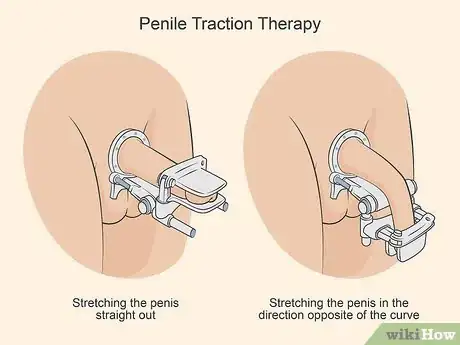



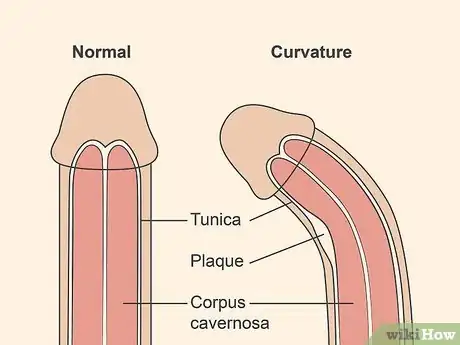



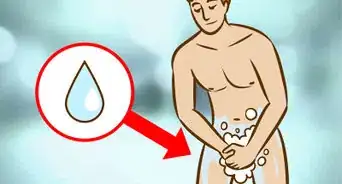
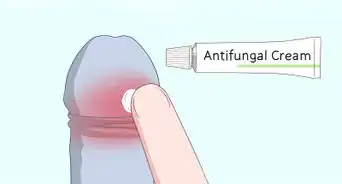
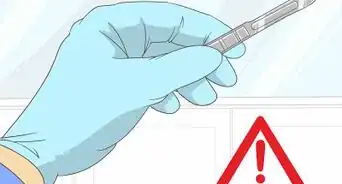



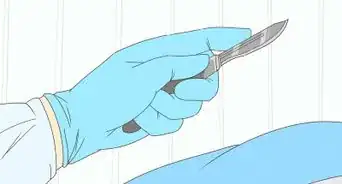




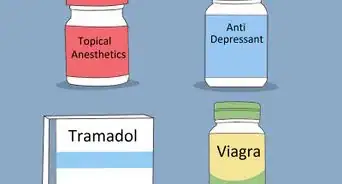

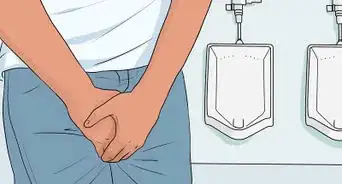










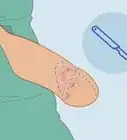



































Medical Disclaimer
The content of this article is not intended to be a substitute for professional medical advice, examination, diagnosis, or treatment. You should always contact your doctor or other qualified healthcare professional before starting, changing, or stopping any kind of health treatment.
Read More...